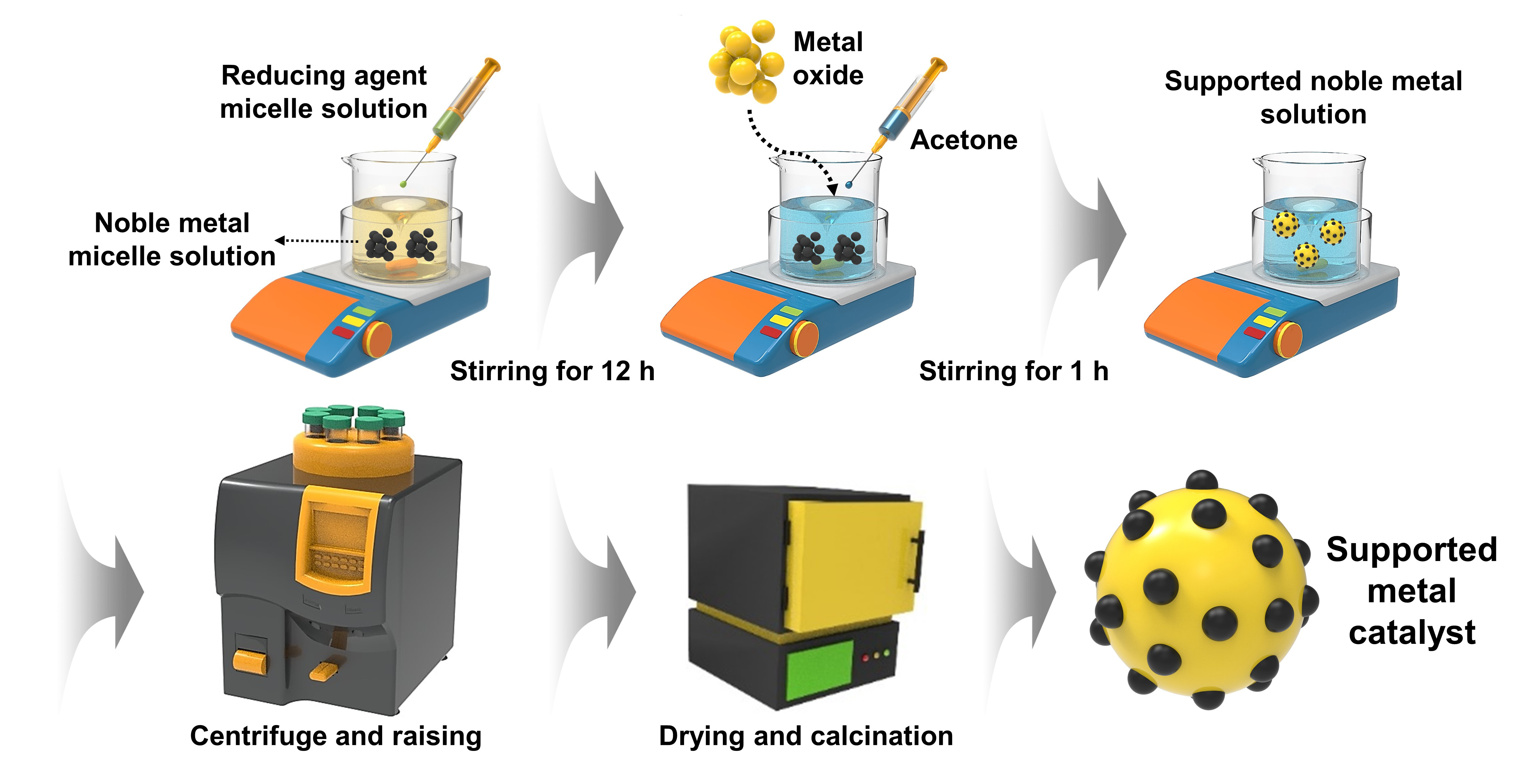Particle Size-controlled Catalyst Synthesis

A central challenge to advancing heterogeneous catalysis is the efficient and economical use of expensive catalytic materials. This challenge centers on the fact that increasing the fraction of exposed metal atoms, which can be accomplished through reducing particle size, does not necessarily result in improved catalytic activity. Thus, developing systems consisting of size-controlled nanoparticles deposited on oxide supports allows exploring interdependencies of active site distribution, particle size, and particle morphology on catalytic activity. Generally, synthesizing metallic nanoparticles using a microemulsion approach can efficiently prepare a broad range of monodisperse catalysts for several applications. This technique offers tunable parameters to control particle size while avoiding heat treatments that can alter particle size and broaden the distribution of sizes. Our primary goal is to develop the microemulsion synthesis process to produce size-specified supported catalysts. The secondary goal is to explore the relationship between catalytic activity and the diameter of microemulsion-synthesized monodisperse metal particles because the number of sites with a particular coordination number changes with particle size.
Particle Shape-controlled Catalyst Synthesis

The advancements in synthesis methodologies, particularly in the realm of nanoparticles with varying dimensions, have facilitated the enhancement of catalytic efficacy in targeted processes through meticulous control of their morphological characteristics. Significant correlations exist between the morphology of nanoparticles and their chemical, physical, and catalytic properties. Within our research group, we specialize in fabricating nanowires (1-dimensional) and nanocubes (3-dimensional) particles using a range of synthesis methods such as hydrothermal, modified polyol, precipitation, and incipient impregnation techniques. Our group possesses the flexibility to craft catalysts in diverse shapes, allowing us to emphasize specific features originating from either the support or metal component of the catalyst, depending on the desired outcome.

